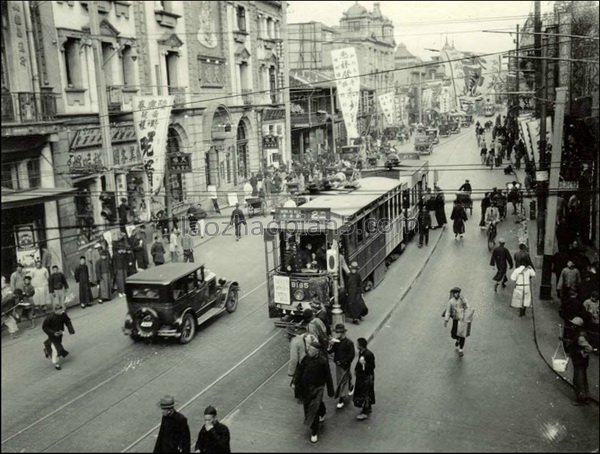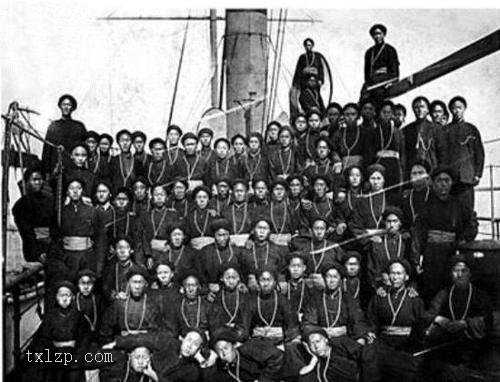Period:Unknown Production date:5thC
Materials:clay, 灰泥 (Chinese), hair,
Technique:painted, slipped,
Subjects:buddha 佛 (Chinese)
Dimensions:Height: 54 centimetres
Description:
Head of a large Buddha figure. The clay used to make it was mixed with a large amount of hair. Traces of a white slip and black paint can still be seen, but the object is very fragile and many pigments have flaked off..
IMG
![图片[1]-figure; 畫像(Chinese) BM-MAS.627-China Archive](https://chinaarchive.net/Unknown/43/mid_00010258_003.jpg)
Comments:EnglishFrom Whitfield 1985:The remains of the Miran vihara M. Ⅱ, as described by Stein (Serindia, Vol. I, p. 487), consisted of a solid mound of sun-dried bricks, in two storeys, with a base 46 by 36 feet (about 13.8 by 10.8 m) and a second storey, badly decayed, 17 by 15 2/1 feet (5.1 by 4.65m). A passage about 10 feet (3 m) wide enclosed the central portion of the shrine, and was lined along the outer wall with a row of colossal seated images of the Buddha, each measuring 7 feet to 7 feet 3 inches (about 2.1m) across the knees, and all in dhyana-mudra. Of these only the bases, hands and legs were preserved, but the head seen here had been protected through falling into the space, wider at the back than at the front, between two of these figures. It originally belonged to the third of five figures uncovered by Stein.Although the head itself evidently cannot provide a firm basis for dating, evidence of various kinds noted by Stein leads to the date given here. The drapery over the knees of the figures was arranged as at Gandhara, with three concentric folds falling from the hands. The folds on two of the statues were in the form of boldly raised plaits about an inch (2.5cm) wide and on the other three, including this one, as narrow double grooves. There were traces of red colour, similar to the statues from Rawak. Further evidence came from the shape of the Indo-Persian stucco pilasters around the vihara base. These also show Gandharan features and must have taken time to develop into the forms seen later at Endere and Khadalik. Probably the most conclusive evidence for the dating of the Miran vihara is provided by the finding of a palm leaf pothi in Sanskrit, written in Brahmi characters of an early Gupta type, which cannot be later than the fifth century A.D., and by the corresponding absence of any relics of Tibetan writing (in contrast to Endere and Khadalik, where Tibetan documents were found in abundance). ChineseFrom Whitfield 1985:據斯坦因記述(參照《西域》487頁),米蘭寺院遺迹的第Ⅱ寺址是用曬乾的磚建造的結實的兩層建築物,第一層爲13.8m×10.8m,第二層爲5.1m×4.65m。正殿中心部分圍有寬3米的回廊,沿其外壁,排列著約有2.1米的巨大坐佛,手結定印。現還殘留著那些台座、手、腳。而本圖所示的頭部,不是在像與像間的前方,而是落在空間稍寬的後方,才得以保留下來。這是斯坦因發掘的五身當中的第三尊。佛頭本身沒有任何提示確切年代的證據,但從斯坦因所記述的以下種種特徵,能夠推算它的年代。即蓋在佛像膝蓋上的衣紋線,是從兩手垂下的三條衣褶的集合點,此是犍陀羅式的。佛像其中的兩身上約有2.5釐米寬的粗褶子,包括本像在內的三身像上,有兩條狹窄的溝狀褶子,殘留著與熱瓦克出土的塑像群相似的紅色痕迹等。另外,更明確的證據是,還可舉出圍繞寺院部位的印度、波斯風格的灰泥壁柱形狀。它們具備犍陀羅的特徵,後又向安得悅和喀達里克見到的形式發展的。對米蘭寺院遺迹的年代判斷上,最具決定性的證據是,梵文貝葉的發現。那是用笈多王朝早期的婆羅謎文寫的,不可能晚於5世紀以後。另外,從完全沒有發現吐蕃文資料這一點上也應得到證實(與安得悅和喀達里克發現大量吐蕃文書形成對比)。
Materials:clay, 灰泥 (Chinese), hair,
Technique:painted, slipped,
Subjects:buddha 佛 (Chinese)
Dimensions:Height: 54 centimetres
Description:
Head of a large Buddha figure. The clay used to make it was mixed with a large amount of hair. Traces of a white slip and black paint can still be seen, but the object is very fragile and many pigments have flaked off..
IMG
![图片[1]-figure; 畫像(Chinese) BM-MAS.627-China Archive](https://chinaarchive.net/Unknown/43/mid_00010258_003.jpg)
Comments:EnglishFrom Whitfield 1985:The remains of the Miran vihara M. Ⅱ, as described by Stein (Serindia, Vol. I, p. 487), consisted of a solid mound of sun-dried bricks, in two storeys, with a base 46 by 36 feet (about 13.8 by 10.8 m) and a second storey, badly decayed, 17 by 15 2/1 feet (5.1 by 4.65m). A passage about 10 feet (3 m) wide enclosed the central portion of the shrine, and was lined along the outer wall with a row of colossal seated images of the Buddha, each measuring 7 feet to 7 feet 3 inches (about 2.1m) across the knees, and all in dhyana-mudra. Of these only the bases, hands and legs were preserved, but the head seen here had been protected through falling into the space, wider at the back than at the front, between two of these figures. It originally belonged to the third of five figures uncovered by Stein.Although the head itself evidently cannot provide a firm basis for dating, evidence of various kinds noted by Stein leads to the date given here. The drapery over the knees of the figures was arranged as at Gandhara, with three concentric folds falling from the hands. The folds on two of the statues were in the form of boldly raised plaits about an inch (2.5cm) wide and on the other three, including this one, as narrow double grooves. There were traces of red colour, similar to the statues from Rawak. Further evidence came from the shape of the Indo-Persian stucco pilasters around the vihara base. These also show Gandharan features and must have taken time to develop into the forms seen later at Endere and Khadalik. Probably the most conclusive evidence for the dating of the Miran vihara is provided by the finding of a palm leaf pothi in Sanskrit, written in Brahmi characters of an early Gupta type, which cannot be later than the fifth century A.D., and by the corresponding absence of any relics of Tibetan writing (in contrast to Endere and Khadalik, where Tibetan documents were found in abundance). ChineseFrom Whitfield 1985:據斯坦因記述(參照《西域》487頁),米蘭寺院遺迹的第Ⅱ寺址是用曬乾的磚建造的結實的兩層建築物,第一層爲13.8m×10.8m,第二層爲5.1m×4.65m。正殿中心部分圍有寬3米的回廊,沿其外壁,排列著約有2.1米的巨大坐佛,手結定印。現還殘留著那些台座、手、腳。而本圖所示的頭部,不是在像與像間的前方,而是落在空間稍寬的後方,才得以保留下來。這是斯坦因發掘的五身當中的第三尊。佛頭本身沒有任何提示確切年代的證據,但從斯坦因所記述的以下種種特徵,能夠推算它的年代。即蓋在佛像膝蓋上的衣紋線,是從兩手垂下的三條衣褶的集合點,此是犍陀羅式的。佛像其中的兩身上約有2.5釐米寬的粗褶子,包括本像在內的三身像上,有兩條狹窄的溝狀褶子,殘留著與熱瓦克出土的塑像群相似的紅色痕迹等。另外,更明確的證據是,還可舉出圍繞寺院部位的印度、波斯風格的灰泥壁柱形狀。它們具備犍陀羅的特徵,後又向安得悅和喀達里克見到的形式發展的。對米蘭寺院遺迹的年代判斷上,最具決定性的證據是,梵文貝葉的發現。那是用笈多王朝早期的婆羅謎文寫的,不可能晚於5世紀以後。另外,從完全沒有發現吐蕃文資料這一點上也應得到證實(與安得悅和喀達里克發現大量吐蕃文書形成對比)。
© Copyright
The copyright of the article belongs to the author, please keep the original link for reprinting.
THE END



![[Qing Dynasty] British female painter—Elizabeth Keith, using woodblock prints to record China from the late Qing Dynasty to the early Republic of China—1915-China Archive](https://chinaarchive.net/wp-content/uploads/2022/11/image-191x300.png)

